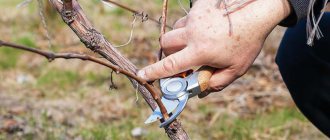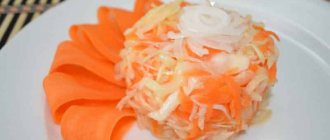Properly prepare an oak barrel: general information
There is no clear answer to the question of when the first wooden tubs and barrels appeared and who is the author of these inventions. There are several versions. But they have one thing in common: they appeared before our era and were used as large dishes for storage.
What is the difference between a tub and a barrel? A wooden tub is a container that can only stand vertically and has an easily removable lid. This makes it easy to remove food stored inside if necessary.
A wooden barrel is a container that can be turned from a vertical to a horizontal position and rolled without fear of losing the contents. Since the lid of the barrel is hermetically sealed, it is impossible to get anything out of it at will. It is intended for storing products for which access to air is harmful, for example, wine.
This is why wooden tubs are used for pickling vegetables, soaking fruits or storing any bulk products, and barrels are used for storing wine, infusing cognac, etc.
This was the case before, but today, coopers also make barrels with lids, like a tub, which means they can be used for pickling.
What to do with a barrel, step-by-step instructions
A new barrel requires attention and certain actions must be performed in order for it to serve for a long time. If you plan to use the oak tub for pickling not immediately and it must wait for some time, then wrap it completely in cling film. Place it in a cool, preferably dark place so that it does not dry out. Before use, follow these steps:
Step-by-step instructions on how to properly prepare an oak barrel for use. Please note that this will take you at least a week:
- Fill the container with water to the brim for 7-10 days, changing the water daily. This is especially important if the weather is hot. Even if the tub was leaking before, during this time the boards will swell and the cracks will disappear.
- Just before use, pour boiling water or hot water over the wooden pickling tub 4 to 6 times.
- If you pickle cucumbers or tomatoes in it, be sure to rub the walls and bottom of the tub with peeled garlic.
Now your beauty is ready to accept the precious product for storage. I already told you how to pickle cucumbers and tomatoes here. Why do you need to do this? Boiling water is necessary in order to sterilize the tub, and garlic acts as an antibacterial coating - this is firstly, and secondly, the phytoncides preserved on the tree will impart the aroma and taste to the product.
After your tub is free and you do not plan to use it for some time, then carry out the same manipulation with the film that I described above. And before use, properly prepare the barrel again, although you can pour boiling water over it a couple of times, but be sure to rub it with garlic again.
Wooden tub for pickling
The tubs are made from: linden, ash, oak, pine, aspen, birch, cedar. Sizes can be very different. But usually, households use containers from 10 to 50 liters for pickling vegetables and pickled fruits.
Which tub is best to use for what? An oak tub is best suited for cucumbers and tomatoes, since during storage the vegetables acquire a unique taste and aroma, and tannins allow the cucumbers to remain crisp for a long time.
A linden tub is good for cabbage, mushrooms and apples. Since it does not release any coloring elements, cabbage and apples will not darken, unlike an oak tub. And due to the fact that linden itself has a wonderful smell, the products stored in it acquire the same aroma.
Which container to choose is a personal matter; it is important to properly prepare the barrel for use. From my own experience, I can say that we made cabbage with apples in an oak tub, and it turned out very tasty. To do this, you need to use a special thick plastic bag and there will be no contact with the tree. How to do this correctly is described here.
Preparing the barrel for use
It’s inconvenient to have a household without barrels - it’s good to salt cabbage and cucumbers in them for the winter, and it’s good to make apple cider vinegar, and it’s good to store water at home. At first, everyone mostly uses enamel cookware, but over time there is a need to replace it with normal cooperage products.
Any pickles feel good in wooden dishes, and even more so in oak. All sorts of spices are pre-packed in the oak tub, giving the pickles a pleasant taste and unique aroma. And a linden tub for storing honey is as important as an oak barrel for wine. In a linden tub, honey, like wine, is infused and acquires a fragrant aroma and taste.
And new barrels, tubs, vats, etc. must be prepared before use.
Tubs for pickles are prepared in the same way as barrels for wine. Briefly, the hoop is lowered, soaked, steamed, washed.
Cool boiling water must be carefully poured into the barrel without pouring on the outside (about 30% of the volume) and the stopper must be plugged (not tightly) for 15-30 minutes. After this, you need to drain the darkened water and fill it with cold water for 15-20 days. It is recommended to change the water every 2-3 days. Before use, rinse the barrel with hot water.
Before you start preparing the barrel, you need to check the hoop and, if necessary, lower all the hoops using a heel and hammer. New oak barrels should be leached with clean drinking water for 2-4 weeks, changing the water every 3-4 days. Then the barrels are washed with hot water or steamed with steam at a temperature above 100 ° C. Soda 20 g per 1 liter of water is added to hot water, then washed again with hot and cold water. After the inner surface has dried, the barrel is fumigated with sulfur. Barrels that have been used should be washed well with hot water and then fumigated with sulfur in order to destroy the fungi and mold that developed in them while they were empty. For this purpose, a piece of sulfur is placed on a tin plate tied to a wire, lit and lowered into a barrel. While the sulfur is burning, the hole should be covered with a rag. Fumigated barrels, before placing wine in them, must be thoroughly rinsed, since the sulfurous acid that has formed in them slows down the fermentation process, and sometimes completely prevents its onset. I think vinegar barrels are prepared in much the same way. If anyone knows their subtleties here - write!
A new oak barrel without treatment is not suitable for use, since oak staves contain soluble substances: tannic acids, salts, etc., which give the wine (or whatever is in the barrel) a special flavor (of oak), affect the color and enrich it with tannins
. Oak wood contains special preservatives that kill putrefactive microbes and give products a special taste and aroma.
Barrel preparation is very important.
Very often, inexperienced picklers do not pay due attention to the thoroughness of washing, scalding, fumigation and other preparatory processes, and this leads to deterioration in the quality and even spoilage of salted vegetables.
More details:
The staves of new barrels contain tannins (tannins). If you pour wine or another product into such a container without preparation, it will darken and acquire a tart taste. New barrels are soaked. Under no circumstances should the product be completely filled with water! When soaked, the rivet swells and tightly closes small cracks.
The barrel is steamed for half an hour or treated with steam or boiling water (for a 10-liter container - 0.3 liters of boiling water), removing the cork by shaking jerkily so that the hot water washes the rivets, then gradually fill the product to the top with cold water (to speed up the preparation process, it is recommended to fill it with hot water), changing the water every day. Repeat the procedure until the last water becomes completely clean, uncolored, without any foreign taste or smell. If this is not done, the sauerkraut will be dark in color.
At the very beginning of soaking, if the barrel has a small leak, you need to top it up with water 2-3 times a day. Then the barrel is washed for at least half an hour with hot water and soda: (200 grams of soda per bucket of hot water) and rinsed with hot water. After this, the barrel is rinsed with cold water.
Barrels that are not new, have been used, but have no foreign odor, are washed first with cold, then hot water and dried. Do not allow hot water to cool in the barrel, as in this case the stave may absorb foreign odors.
If the barrel is not intended to be used for some time, then it is advisable to fumigate it with sulfur to prevent the development of microorganisms.
If there is no sulfur, you can treat the barrels with caustic soda.
Take 80 - 100 g of solid caustic soda per hundred-liter barrel and fill it with clean hot water to about 1/3 of the barrel's capacity. The barrel is closed and rolled for 10 - 15 minutes. Then the soda solution is poured out, and the barrel is thoroughly rinsed with clean water.
Used barrels, after thorough washing and soaking, can be treated with bleach dissolved in water instead of fumigation.
It goes without saying that fish, meat and butter barrels should not be used for fermenting vegetables.
The pores of the barrel always contain mold and bacteria spores, which develop under favorable conditions. In practice, when steaming barrels, temperatures rarely reach above 100, as a result of which bacterial and mold spores can remain unharmed and, under favorable conditions, cause disease in the wine. Therefore, for all types of cleaning wine containers, it is necessary to use dry steam treatment, at which the highest temperature is reached, in most cases guaranteeing the sterility of the processed containers.
Steaming barrels, tubs, tubs
Steaming a tub is a hygienic action that helps disinfect and aromatize the wood. Not only the old, but also the new tub or barrel must take a bath with hot steam and an oak, juniper or birch broom
.
How can you make the water in the tub boil, since you can’t put it on fire? In ancient times, this problem was solved quite simply. The tub or barrel was filled approximately one-third with water, brought to a boil in a metal container over a fire. On the same fire, heavy stones (most often sandstones) were heated, which were thrown into a cooper's vessel with hot water. The water began to boil, forming thick clouds of steam. This method of heating water in tubs and barrels is still used today.
When steaming, an oak, birch or juniper broom is placed in the tub along with hot stones. From above, so that steam does not escape from it, the tub is covered with a wooden lid, and then with an old blanket or padded jacket. After a few minutes, when the formation of steam begins to subside, the tub is opened, periodically doused with hot water, and the steamed rivets are whipped with a fragrant broom. The swollen wood eagerly absorbs the aroma along with the beneficial substances contained in the leaves and needles. To ensure that the staves retain their freshness and aroma, the water is poured out of the tub while it is still warm.
As soon as the steamed tub dries slightly, pre-prepared vegetables, berries, mushrooms and other products along with various spices are immediately loaded into it.
How to store barrels of pickles
Tubs filled with pickles, pickles and soaks are stored in a cool room: in a closet, entryway, underground or cellar, where the temperature does not drop below zero.
. Only cabbage and meat, as well as cranberries, can be stored in the cold. Previously, in some regions of Russia, tubs of meat were buried in a snowdrift for the winter.
Even in the driest room, you should not place the tubs directly on the floor or ground, as mold can form on the bottom bottom, as well as in the mouths. Even tubs with legs that have good ventilation should be placed on special wooden grates.
They should be at such a distance from the floor that it is convenient to pour dry sawdust under them from time to time and remove wet sawdust.
In addition, it is necessary to constantly monitor the circle. At the slightest appearance of mold, wash it, pour boiling water over it and rinse in salt water. Stone and spacer bars are processed in the same way. And then pickling, pickling and soaking will retain a pleasant taste, delicate aroma and appetizing appearance until spring
.
Why soak barrels?
Filling barrels and vats with water is also necessary for another reason. Usually the barrels, even if they were previously under salted vegetables, but have long been emptied, dry out and cracks form between the individual rivets through which juice or brine from the vegetables flows out. When soaked, the wood swells somewhat, the cracks disappear, and the barrel becomes dense, suitable for placing vegetables in it. When the soaking is finished, the barrels are thoroughly washed with hot water using brushes.
I even heard this recommendation - if the barrel is not used, during storage it should be filled with water at the bottom (to a height of 2-3 cm). The barrel is afraid of dryness!! I think that during storage you can not just pour water, but pour silicon on the bottom and pour water. Flint water does not go out - we have already tested this for ourselves. So, in order not to create a swamp in the barrel, you can keep it like this.
When preparing the article, materials from the sites were used - www.ler-bochka.ru/instruction.php. And also - kp.ru/daily/24506/658408.
New oak barrel, where and how to buy
Information from personal experience. Before ordering a tub or barrel, spend your precious time browsing the websites of companies selling and manufacturing these products on the Internet.
Pay attention not only to the price, but also to reference materials about the products, customer reviews, forums, etc. Also, be sure to check the company’s TIN to see if it really exists and how long it has been in this market.
Contact the manager, try to get as much information as possible about the product. Find out what comes with the container, since in some companies wooden tubs and barrels for pickling come with a lid and two halves of a wooden circle for pressing the product, and in some only with a lid.
Be sure to ask what is currently in stock, and if not, what is the production time, etc. Almost every company claims that their product is ready for use, but you shouldn’t trust this, since the manager’s main task is to sell.
Therefore, having received your long-awaited order, inspect it carefully, immediately fill it with water, having previously installed the container in the bathtub if you have an apartment, or on the street if you have a private house, since tubs and barrels can leak.
No, this is not a defect, it will just take a few days for the products to be ready for use.
If a barrel is leaking, it will show up almost immediately. Well, if it doesn’t leak, you received a prepared product, that’s great. The cost of the product depends on the volume and material. For example, a 10-liter oak bottle costs from 4,900 rubles, a 50-liter bottle costs 8,000 rubles. Linden barrels cost from 3,900 to 9,000 rubles.
Rules for storing a barrel of pickles
One of the important stages that affects the taste, aroma and shape of pickles is the storage conditions of the tubs and barrels. Basic Rules:
- The temperature should not fall below 0 degrees. For the first few days, the tub is left at 25-28, and then lowered into the cold, where the thermometer readings are kept within 0-+5 degrees.
- There must be good air circulation in the cellar where the pickles are stored.
- Containers should not be placed on the floor; it is recommended to prepare wooden pallets.
- The recommended period for pickling or fermenting is 1 year. Further, cucumbers and other vegetables lose their taste.
- In winter, a film of yeast often appears on the surface. It is important to remove it so that the vegetables do not lose their structure and acquire their characteristic taste.
Fungus is the main threat to pickles. To avoid its appearance, sprinkle the surface with mustard powder or add thin slices of horseradish.
Important! Before you start storing tubs and barrels, you should prepare the cellar: clean the walls of mold, normalize the humidity level.
In order for vegetables in an oak tub to retain their vitamins and acquire a special taste and aroma, it is important to properly prepare the container and organize storage. Thorough disinfection and correct temperature conditions are the key to successful preservation.
Recipes for sauerkraut in a barrel
Preparing the ingredients is a critical step when fermenting cabbage. All products must be mature and not spoiled - the shelf life of the pickling depends on this.
For the classic recipe for sauerkraut in a barrel you will need the following ingredients :
- 10 kg of white cabbage;
- 1 kg of fresh carrots;
- 250 g salt;
- 50 g sugar;
- 15 g black pepper (corns);
- 50 g rye bread.
Step by step cooking method :
- Peel the cabbage from the top leaves, chop the head of cabbage into strips (not very finely) or grate it on a special grater.
- Peel the carrots and grate on a coarse grater.
- In a separate container, mix cabbage, carrots, salt and sugar.
- Place a slice of dry rye bread at the bottom of a wooden barrel and cover it with whole cabbage leaves.
- Place the vegetables in dense layers, compacting them periodically until the juice appears. Do not fill the barrel to the very top, leave room for the lid and pressure.
- Cover the laid mass with gauze folded in half.
- Place a pressure on top and cover with a lid, leave the barrel with cabbage in a warm place for two days.
- Once a day, pierce the mass to the very bottom to release the accumulated carbon dioxide.
- After two days, take the barrel outside (at a temperature of +8°C or less) and leave for another three days.
- Store finished sauerkraut outside or in a cool place where the temperature is not lower than 0°C.
It is advisable to add all vegetables not immediately, but gradually, in parts, so that it is easier to mix and they do not lose their appearance. You can add cranberries or cloves to the finished pickles in a barrel.
Cold way
This method is very simple, no additional ingredients are needed. First of all, prepare the container, wash it thoroughly and dry it.
To ferment cabbage you will need:
- cabbage – 10 kg;
- carrots – 1-1.5 kg;
- sugar – 50-60 g;
- black peppercorns – 15-20 g;
- Rye bread;
- salt – 200 g.
Cooking method:
- Remove the top leaves from the cabbage and peel the carrots.
- Finely chop the head of cabbage with a knife or through a food processor, grate the carrots on a coarse grater.
- In a separate pan, combine vegetables and spices.
- Use rye bread as a starter, placing it at the bottom of the barrel.
- Place the vegetable mixture on top, press down and place under pressure for two days at room temperature.
- Refrigerate for two days.
- Store the finished pickling in a cool place.











